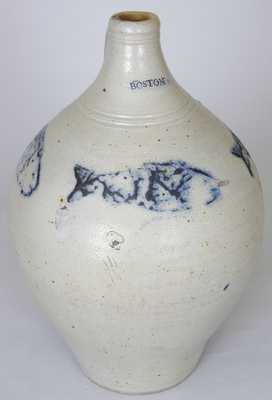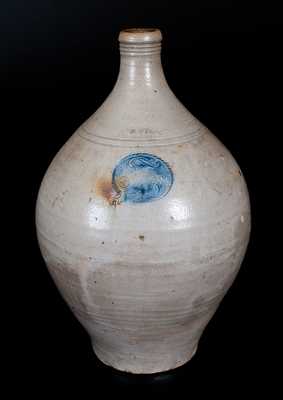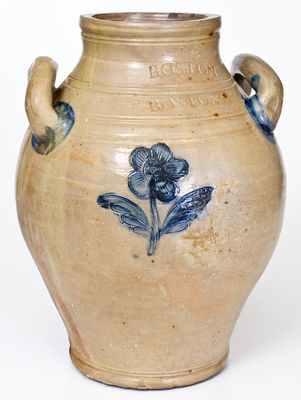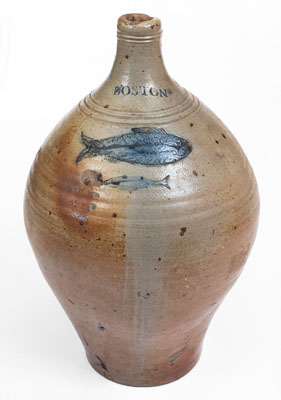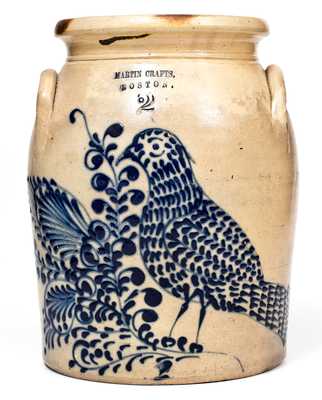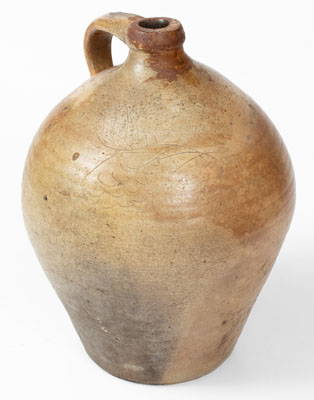Important and Possibly Unique Stoneware Flowerpot with Profuse Decoration of a Mourning Dove Perched on a Flowering Vine, Stamped "S D KELLOGG / WHATELY," Massachusetts origin, circa 1851-1853, large-sized, flare-rimmed pot with stepped rim molding, applied lug handles, and drain hole in underside, profusely-decorated with a slip-trailed design of a mourning dove with spotted body and cobalt-filled wing, perched on the stem of an elaborate vine, flanked by two large flower blossoms. Intricate detail to blossoms with spots surrounding large solid circles inside each petal. Impressed with the cobalt-highlighted mark, "S D KELLOGG / WHATELY", below rim. With its exceptional form and decoration, this flowerpot is believed to be the finest example of Whately stoneware known. It is famously featured on the cover of the book, A Guide to Whately Pottery and The Potters, Whately Massachusetts, 1778 to 1873, by Henry C. Baldwin. In this book, Baldwin suggests that the flowerpot and other pieces bearing the mark "S.D. KELLOGG" were not made by Silas D. Kellogg, but rather by his wife, Maria Crafts Kellogg. This attribution is supported in part by the fact that Maria was born into the Crafts potting family, her father, Caleb, and uncle, Thomas, both being potters themselves. In his book, Baldwin states "nearly all of the decorations tell a story, also the foliage with a bird or without can be identified. The mourning dove and cherry trees with fruit was a common site at the Crafts farm. Maria, daughter of Caleb Crafts, . . . had been subjected to pottery her entire life. We have no doubt that she and her older sister Harriett had their fingers in the clay while in New York, then Maine, then New Hampshire and then Whately. The pottery has a woman's touch in detail, decoration and finish ... . Her husband Silas was not a potter. We prefer to give her the credit, without any real proof except that she now was in charge of her own works next to Thomas Crafts and doing exactly as she wished in her own pottery works which she later sold to Thomas Crafts" (Baldwin, p. 17). An outstanding work combining several desirable factors including decoration, form, maker, and size. Literature: Pictured on the cover of Henry C. Baldwin, A Guide to Whately Pottery and The Potters, Whately Massachusetts, 1778 to 1873. Provenance: A fresh-to-the-market example, which descended to the consignor. 1 3/4" in-the-firing separation in rim on left side of front. 4 1/2" hairline from rim on reverse. A minor 3 3/4" surface line on interior, presumably in-the-firing, and not visible on exterior. Some fry to cobalt. H 12 3/4" ; Diameter (across top) 13".










